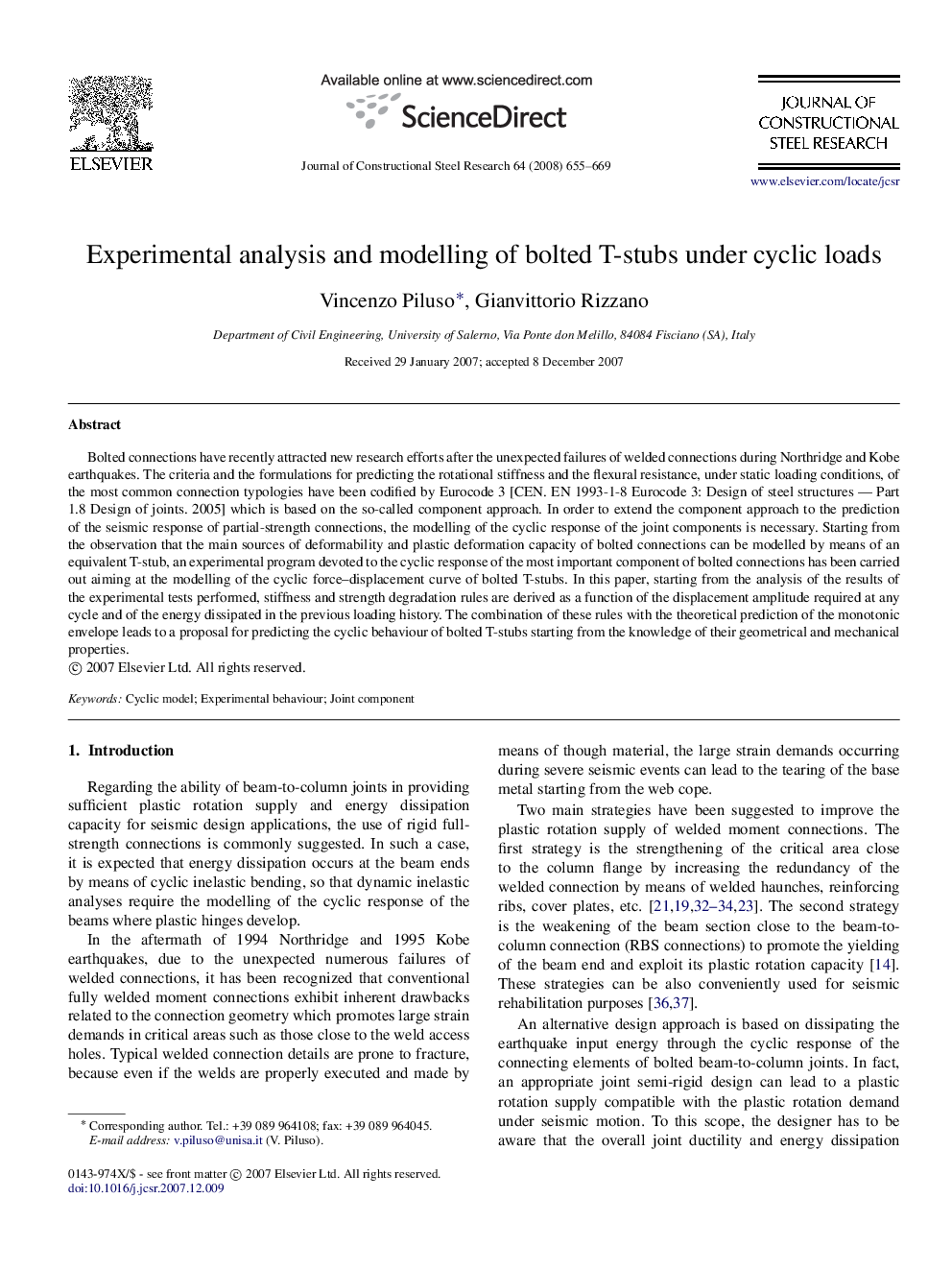| Article ID | Journal | Published Year | Pages | File Type |
|---|---|---|---|---|
| 286221 | Journal of Constructional Steel Research | 2008 | 15 Pages |
Bolted connections have recently attracted new research efforts after the unexpected failures of welded connections during Northridge and Kobe earthquakes. The criteria and the formulations for predicting the rotational stiffness and the flexural resistance, under static loading conditions, of the most common connection typologies have been codified by Eurocode 3 [CEN. EN 1993-1-8 Eurocode 3: Design of steel structures — Part 1.8 Design of joints. 2005] which is based on the so-called component approach. In order to extend the component approach to the prediction of the seismic response of partial-strength connections, the modelling of the cyclic response of the joint components is necessary. Starting from the observation that the main sources of deformability and plastic deformation capacity of bolted connections can be modelled by means of an equivalent T-stub, an experimental program devoted to the cyclic response of the most important component of bolted connections has been carried out aiming at the modelling of the cyclic force–displacement curve of bolted T-stubs. In this paper, starting from the analysis of the results of the experimental tests performed, stiffness and strength degradation rules are derived as a function of the displacement amplitude required at any cycle and of the energy dissipated in the previous loading history. The combination of these rules with the theoretical prediction of the monotonic envelope leads to a proposal for predicting the cyclic behaviour of bolted T-stubs starting from the knowledge of their geometrical and mechanical properties.
